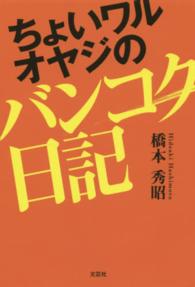- ホーム
- > 洋書
- > 英文書
- > Politics / International Relations
Full Description
Written by scholars and practitioners from both Asia and the West between July 2020 and December 2024, these essays analyze potential flashpoints in Asia and propose pragmatic, implementable ideas for conflict management and peacebuilding.







